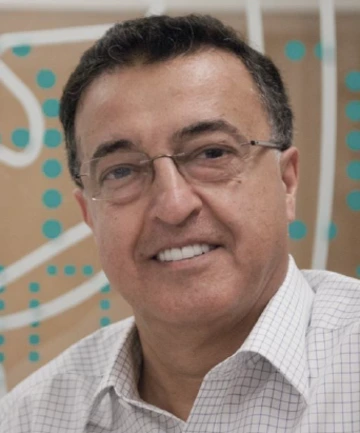When
Thursday, May 1, 2025 at 4:00 p.m.
Mory Gharib
Hans W. Liepmann Professor of Aeronautics and Medical Engineering
California Institute of Technology

"Flying on Mars: The Legacy of von Kármán"
AME S212 | Reception following the lecture
Zoom link
In 1918, Theodore von Kármán, while serving as the research group director at Fischamend Airfield in Hungary, oversaw the development of a small, unmanned drone helicopter powered by a single rotary piston engine with a co-axial double-blade rotor. A century later, engineers at NASA's Jet Propulsion Laboratory (JPL) and GALCIT, institutions founded by von Kármán, achieved a significant milestone by designing, testing and flying a strikingly similar helicopter named Ingenuity on the Martian surface. In this presentation, we will explore some of the challenges engineers at JPL and GALCIT encountered in realizing this feat and discuss future challenges in designing Mars drones.
Biosketch
Mory Gharib is the Hans W. Liepmann Professor of aeronautics and medical engineering at Caltech and the Booth-Kresa Leadership Chair for the Center for Autonomous Systems and Technologies. He also serves as the executive director of the Graduate Aerospace Department (GALCIT) and director of the Center for Autonomous Systems and Technologies. He received his BS degree in mechanical engineering from Tehran University in 1975 and his MS in aerospace and mechanical engineering from Syracuse University in 1978. In 1983, he completed his PhD in aeronautics from Caltech, where he continued his work as a research scientist at JPL before joining UCSD as a faculty member.
Gharib's honors and affiliations include: Member, American Academy of Arts and Sciences; Member, National Academy of Engineering; Charter Fellow, National Academy of Inventors; Fellow, American Association for the Advancement of Science; Fellow, American Physical Society; Fellow, American Society of Mechanical Engineering.
He has received the G.I. Taylor Medal from the Society of Engineering Sciences, the Fluid Dynamics Prize from the American Physical Society, and five new technology recognition awards from NASA in advanced laser imaging and nanotechnology. In 2008, he received R&D Magazine's "R&D 100 Innovation Award" for one of the year's best inventions for his 3-D imaging camera system. Additionally, Gharib has published more than 250 papers in refereed journals and has been issued more than 150 U.S. patents. Gharib’s current research include: vortex dynamics, active and passive flow control, autonomous flight, underwater systems, flight and aquatic propulsion and advanced flow-imaging technologies. His medical engineering research activities include fluid dynamics of the human cardiovascular system and ophthalmology as well as development of medical devices such as heart valves, cardiovascular and human eye health monitoring and drug delivery systems.
The William R. Sears Memorial Lecture
The William R. Sears Memorial Lecture at The University of Arizona, established by the generous support of the Sears family – Mable, David, Susan, Colin and Shelby – remembers and celebrates the work and life of Bill Sears (1913-2002) – one of the most renowned aeronautical engineers of the last century and one of the most distinguished faculty members of academia.
Bill's technical contributions are firmly etched into the archives of aeronautics. They address, with originality and depth, areas such as wing and airplane design, unsteady aerodynamics and flow separation, aeroacoustics and adaptive wind tunnels. Bill’s contributions to the education of a distinguished group of aerospace professionals are unparalled. The many professional honors bestowed on him include the prestigious Prandtl Ring, the von Kármán Medal, and the Guggenheim Medal. His commentaries on the lighter side of our daily activities are warm, witty, and insightful. There are many reasons, professional and personal, to celebrate Bill's legacy.
The William R. Sears Memorial Lecture Series reminds us of this great engineer, scientist, and human being. The lecture reminds us of true scholarship and meaningful values. The lecture connects us with the golden age of aeronautics. With this lecture we express our gratitude to Bill Sears for all that he has done for us.
